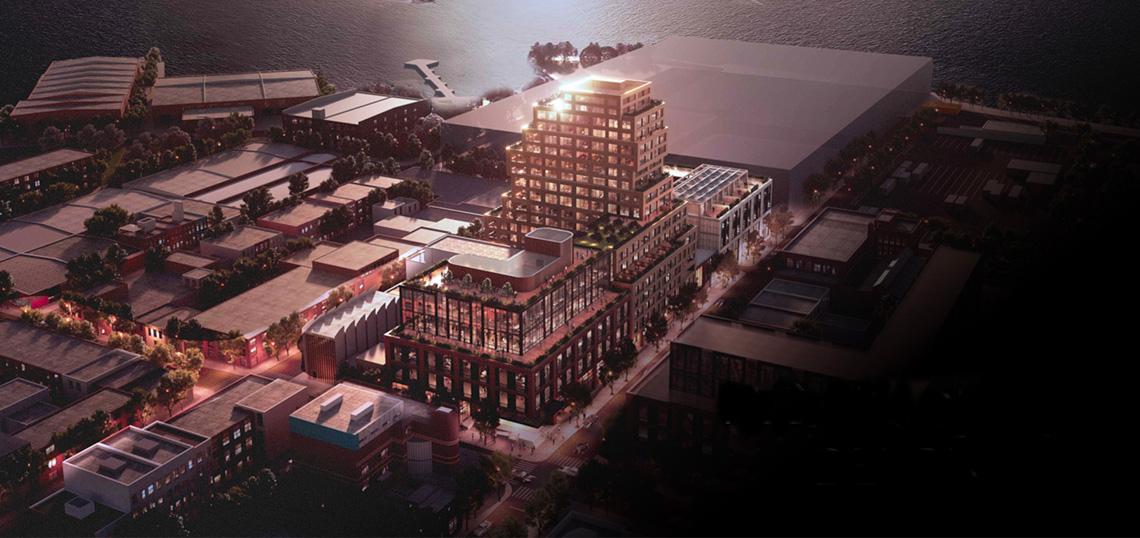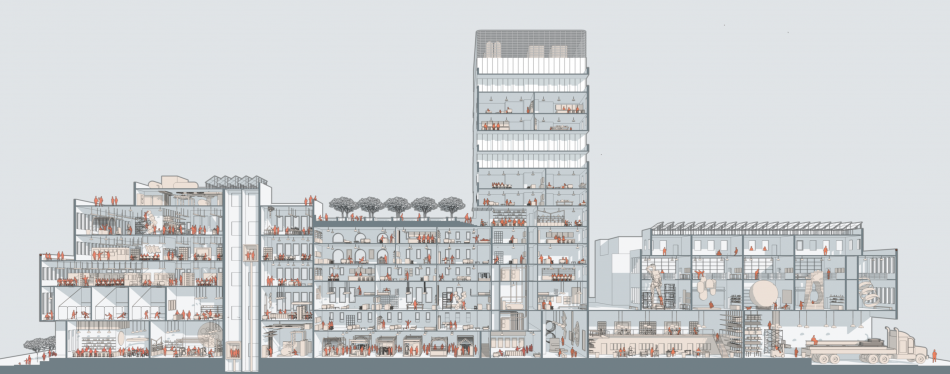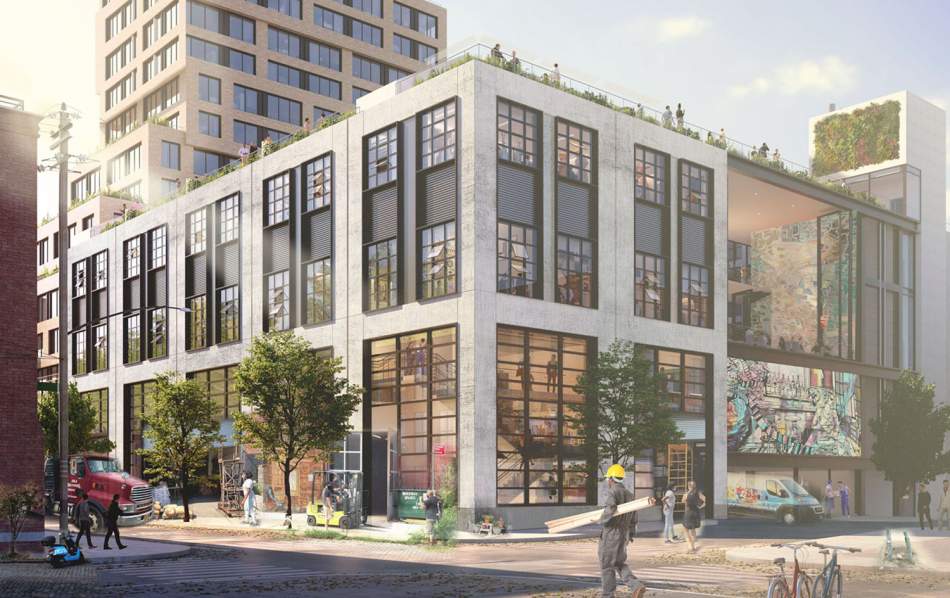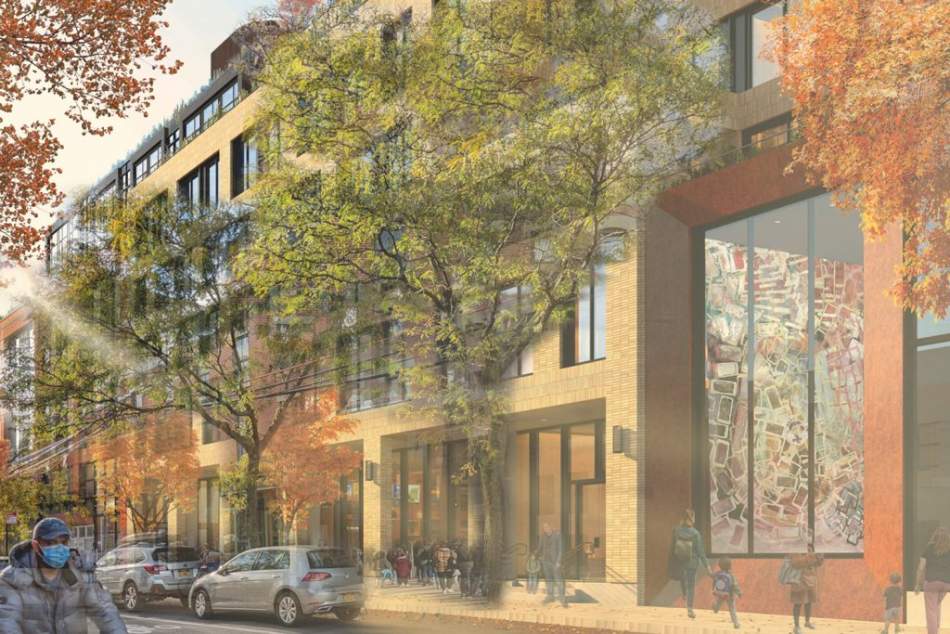“Housing, jobs, resilience and the environment” are what’s driving Model Block, a 407,000-square-foot mixed-use project being developed by DRAW Brooklyn and D.C.-based Four Points LLC. The proposed 15-story development is slated to rise at 145 Wolcott Street, a disused industrial site in burgeoning Red Hook. The new project will introduce a 210-unit, 160,000-square-foot apartment complex to the area, alongside 65,675 square feet of light manufacturing space, and 74,325 square feet of commercial space.
Commercial space would be developed to support new restaurants and retail while office and manufacturing space would be geared towards “maker” uses such as milling, woodworking, coffee roasting, furniture building, clothing production, and metalworking and electronics prototyping—a mix that has increased its presence in Red Hook over the last decade. The developers expect these new businesses to yield more than 337 jobs—jobs they describe as more meaningful to the community than those provided by the many last-mile warehouses popping up in the neighborhood.
Intensive site remediation will also be undertaken through the state’s Brownfield Cleanup Program, and the developers aim to achieve flood resilience by raising apartments one floor above a ground-floor lobby. The program will also include a courtyard 28 feet above the flood line that could also act as an emergency gathering space.
The 210-unit rental building will designate 61 apartments income-restricted, reserving two-thirds for those earning 130 percent of the AMI, and the other third for those earning 40 or 60 percent AMI, with those living in Community Board 6 receiving priority consideration for at least half the units. This mix stands to be the largest addition of affordable units since the construction of the Red Hook Houses in 1939, which house more than 50 percent of the nearly 11,000 people living in Red Hook across 30 buildings.
“This is a site my neighbors and others from across Red Hook have discussed for years—often at community planning sessions on the ground floor of my house on Van Brunt Street,” said Alexandros Washburn, founder of DRAW Brooklyn, a long-time Red Hook resident, and the former chief urban designer during the Bloomberg administration, in a statement. “We asked our neighbors: What do we need in Red Hook? What do we love about Red Hook? And how can we get it all in a model block? The top priorities that emerged were clear: housing, jobs, resilience and the environment.”
A 2014 study conducted by the Department of City Planning found that residential use accounted for just three percent of the total land use in the area. Red Hook has also historically shown an unemployment rate markedly higher than the rest of Brooklyn and Manhattan, a greater percentage of its residents living below the poverty line, and one of the lowest levels of homeownership in the borough at just four percent (versus 30 percent across Brooklyn and 33 percent in Manhattan). These factors leave residents living outside NYCHA and rent subsidy programs extremely vulnerable to gentrification and upward shifts in housing prices.
To that point, the study also notes despite an only .1 percent increase between the Census 2000 count and 2014, "there have been significant gains among White Nonhispanic and Asian Nonhispanic populations, 126.6 percent and 272.7 percent respectively. The most significant loss occurred among Nonhispanic of two or more races and Black/African American populations, 33 percent and 14.7 percent respectively."
According to Property Shark's year-end sales report, the median sale price in Red Hook was $998,000. A cursory search on Street Easy shows limited inventory with prices ranging from $1.55 million for a one-family triplex to $3.2 million for a three-bedroom condo in the new waterfront development 160 Imlay.
Permits for the project were filed back in October 2020. Currently the site is zoned for manufacturing and the developers plan to apply for a variance through the Board of Standards and Appeals (BSA) process. This will bring the project in front of Community Board 6 within the next two months, and later a BSA-led public hearing. If all goes as planned, construction will start in 2022 and wrap in 2024.
Arquitectonica, AE Superlab and Marpillero Pollak Architects are designing the Model Block.
- Red Hook (Urbanize NYC)










